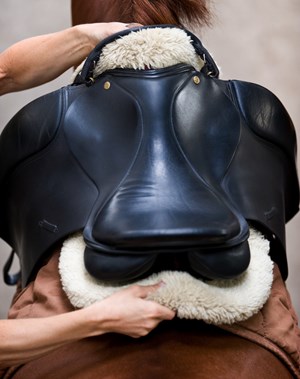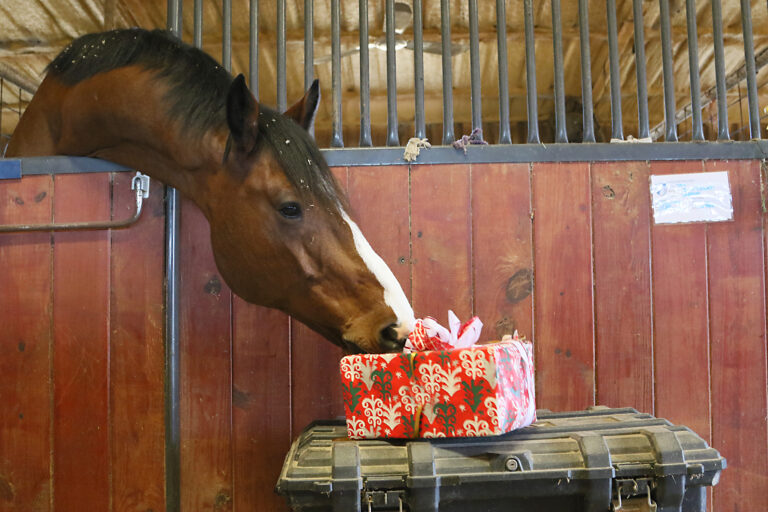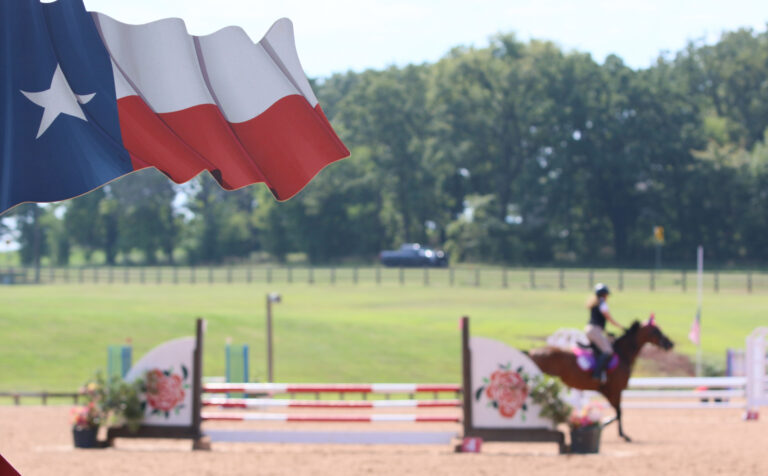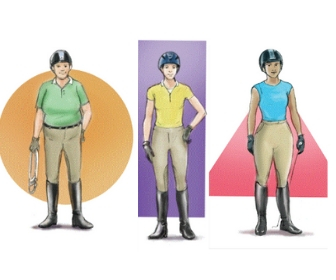If your horse develops a sore back, you naturally check to be sure his saddle fits correctly. If you develop a sore back, you might do well to check the same thing. A link between ill-fitting saddles and sore-backed riders is one surprising finding from an extensive new study carried out by Britain’s Animal Health Trust.
 A recent study discovered a link between poor saddle fit and rider back pain, lameness, saddle slip, asymmetry and rider crookedness. | © Arnd Bronkhorst
A recent study discovered a link between poor saddle fit and rider back pain, lameness, saddle slip, asymmetry and rider crookedness. | © Arnd BronkhorstLine Greve, a doctoral student at the AHT, and Sue Dyson, MA, VetMB, of the AHT Center for Equine Studies, designed the research to explore the relationship between horses, saddles and riders. As part of the work, they carried out clinical assessments of horses and riders to gather data on asymmetry in the horses’ backs, lameness (in hand or ridden), saddle slip, saddle fit and rider straightness. The horses selected were in regular work in a variety of disciplines and were believed by their riders or owners to be sound.
The researchers combined the clinical data with information from a web-based questionnaire completed by 205 riders in the group. Among the findings were these:
• More than 38 percent of riders reported back pain. Rider back pain was associated with poorly fitting saddles, the rider sitting crooked and specific gait abnormalities. Those abnormalities—short strides (a reduced airborne phase) in all four limbs or a stiff, stilted canter—suggested that the horse was uncomfortable.
• Saddles slipped sideways on almost 15 percent of the horses studied. Saddle slip was strongly linked to hind limb lameness and gait abnormalities, but survey responses showed that only two riders had considered the connection.
• Lower rider skill and poor saddle fit were both linked to asymmetry in the horse’s back. Horses ridden by expert riders were less likely to show asymmetry.
• Saddles were more likely to fit correctly when the fit was checked frequently. “Ideally saddle fit should be checked more often than once a year,” says Line. “Yet this isn’t the whole solution because, worryingly, 30 percent of horses that had their saddles checked at least once yearly still had an ill-fitting saddle.”
The full study will be presented in November at the Saddle Research Trust International Conference in Cambridge, England. It doesn’t show that poor saddle fit causes back pain, lameness, saddle slip, asymmetry or rider crookedness—just that these factors are related. But the researchers say their results highlight the need for riders, trainers and other equine professionals to learn more about these complex relationships.
This article originally appeared in the October 2014 issue of Practical Horseman.








